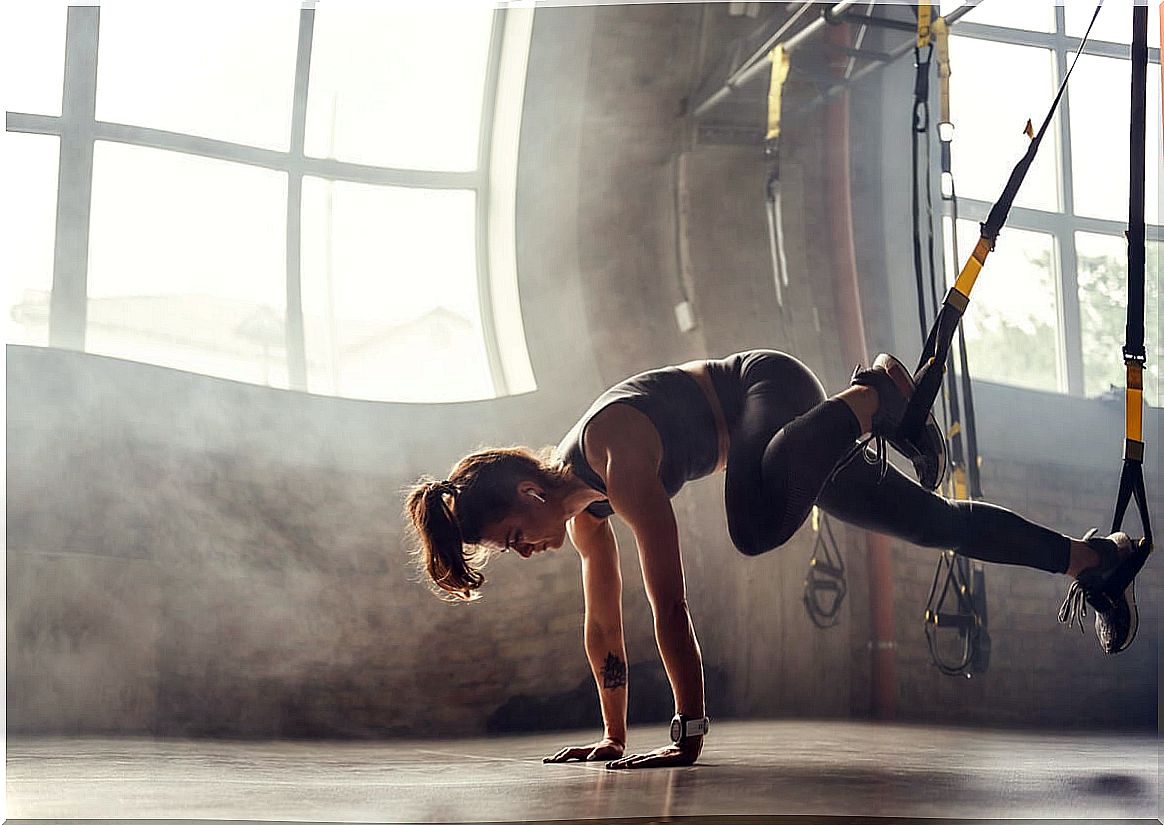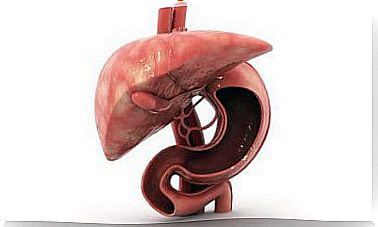Suspension Training Or TRX: Benefits And Exercises To Practice
Suspension training or TRX is an exercise modality in which the weight of the body is used together with anchor points to support the extremities. This causes that, with balance, strength and variation of movements, it is possible to work all of the muscles.
We can find the birth of the TRX in the special operations teams destined for land, sea and air in the United States. The so-called Navy SEALs were looking for alternatives to do their training without the need for large teams that were unfeasible in the work rhythm, thus emerging the suspension solution.
Equipment Description
The internalization of the team with which you work is essential to have security and correctly adapt the movements carried out. Suspension or TRX training tools are heavy-duty tapes that have anchors, so their placement and stability can be achieved in a large number of spaces.
Likewise, the belts, which are mostly made of nylon, have a fastening point with a safety system to balance the belts and that there is no risk of uneven sliding in the routine. On the other hand, they provide the option of sliders, so that the desired length for each session is modified.
What can I train with the TRX?
Suspension training or TRX offers possibilities to train all muscle groups, because the routines have no limitations and are enhanced by people’s own weight. The main characteristic that is looked for with the sessions of this type is the gain of force.
Although it can be used for a comprehensive exercise, it is not recommended as the greatest ally if what you are looking for is muscle hypertrophy. However, in terms of toning, its assessment is superlative.

Benefits for the body
The benefits to the body of suspension training or TRX are wide, ranging from physical aspects to cognitive conditions. Among the prominent advantages of this kind of physical conditioning we can find the following:
- Treatment for injuries: being an exercise in which the intensity can be regulated with simplicity, it is usually used for rehabilitation and recovery.
- Improves posture: it has a series of differentiated workouts that improve posture and reduce slouching that worsens with age.
- Weight loss: workouts can increase in intensity and, being generalized, require a higher consumption of calories, which translates into a reduction in body fat.
- Suitable for the elderly: older people can also train with the TRX at a safe level and that does not pose a risk of injury.
- Adaptable to other workouts: it serves as a complement to other routines, giving an extra toning in well-defined areas.
- Increases coordination: coordination and balance are requirements for practicing TRX, conditions that are enhanced with frequent training with treadmills.
- Mental health: it serves to release stress and the accumulation of different emotional tensions.
- Increase flexibility: suspension exercise is influenced by stretching, which leads to flexibility being worked on in each session.
Some suspension training exercises or TRX
Our selection of TRX or suspension training exercises is based on touching all areas of the body. In addition, they allow simple variations to expand the work location.
In this sense, the movements proposed are lunge with one leg, squat to row high and running man .
1. One leg lunge
The one leg lunge is aimed at the lower body. On the other hand, it has an effect on improving balance. However, the ideal is to have an extra close support during the first practices.
Its realization is done as follows:
- Set the ribbons lower than your knees.
- Standing in front of the straps, bend your left knee and rest your foot in the support area.
- Step forward with your right foot and bend your knee to about a 90 degree angle. Hands should be cupped on hips.
- Maintain the tension of the movement for a few seconds.
- Apply between 8 and 12 repetitions with each leg.
2. Squat to row high
The deltoid, biceps, rhomboid, quadratus lumbar, erector spinae and latissimus dorsi muscles are worked to a greater extent. On the other hand, a lower incidence is also generated in the lower body.
The practice is applied with the following steps:
- Position the straps close to your chest.
- Being 20 centimeters behind the straps, grab the support areas with both hands and drop backwards stretching your arms. The position will be squatting.
- Return to the starting position with the help of bending your arms and stretching your legs.
- Execute 2 sets of 12 repetitions, leaving an intermediate rest for muscle recovery.
3. Running man
The running man is exercise more demanding regarding proposed. It also works the deltoids, pectorals and hip flexors. It is done in the following way:
- Position the straps approximately two feet off the ground.
- Standing in front of the tapes, set both feet in the grip area and the palms of the hands on the floor. Arms should be fully extended.
- Do alternate knee movements, bringing your knees forward while the other leg remains straight. Thus, it seeks to give fluidity and naturalness to the sequence, in the best style of a race.
- Apply 2 or 3 series of 30 seconds. The duration can be increased when the exercise is fully mastered.

Suspension training or TRX care and recommendations
In the care and recommendations to consider is the warm-up before starting the routine. Suspension training sessions or TRX have variable intensities, so it is essential to give the necessary time to the adaptation of the muscles.
Balance and stability are also essential to avoid injuries, since a loss of the core or tremors in the body can cause the accumulation of tension, as well as unwanted sudden movements.
Finally, among the final tips is to keep a proper balance of training for the abdomen and the lumbar area, since a sliding of the pelvis can be an uncomfortable problem and slow recovery.









